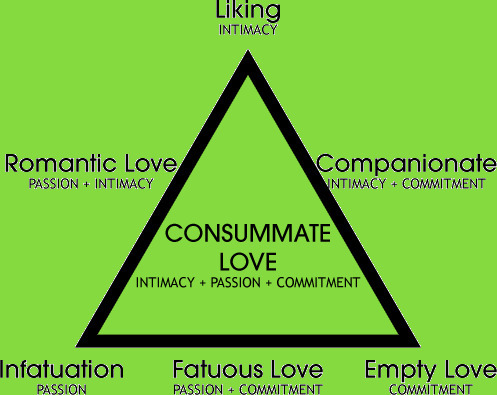Origin of word hormone is believed to be Greek word for "setting in motion". Hormone is a class of signaling molecules in multicellular organisms that are sent to distant organs by complex biological processes to regulate physiology and behavior. Hormones are required for the correct development of all animals, plants and fungi. Due to the broad definition of a hormone, numerous kinds of molecules can be classified as hormones. Hormones are used to communicate between organs and tissues. Hormones are responsible for regulating a variety of physiological processes and behavioral activities such as digestion, metabolism, respiration, sensory perception, sleep, excretion, lactation, stress induction, growth and development, movement, reproduction, and mood manipulation. In plants too, hormones modulate almost all aspects of development, from germination to senescence. In a way hormones are on the driving seat of our life.
While many parts of the body make hormones, the major glands that make up the endocrine system. Although there are eight major endocrine glands scattered throughout the body, they are still considered to be one system because they have similar functions, similar mechanisms of influence, and many important interrelationships. They are Hypothalamus. Pituitary. Thyroid. parathyroids. Adrenals. Pineal body. the Ovaries, and the Testes.

Hormones on Play at Puberty
Puberty is described as the developmental changes in child who undergoes to become sexually mature and physiologically ready for reproduction. It normally begins between the ages of 8-14 in females, and between the ages of 10-16 in males.
Puberty and the reproductive system are controlled by the hormones of the Hypothalamic-Pituitary-Gonadal (HPG). The hypothalamus releases Gonadotropin Releasing Hormone (GnRH) in a pulsatile manner, which stimulates the release of Follicle Stimulating Hormone (FSH) and Luteinizing Hormone (LH) from the anterior pituitary gland. FSH and LH act on the gonads (ovaries/testicles) to stimulate the synthesis and release of the sex steroid hormones (oestrogen / progesterone and testosterone) and support gametogenesis. These sex steroids exert many effects on the reproductive system and feedback negatively on the hypothalamus and the pituitary gland to ensure that circulating levels remain stable.
Puberty in Girls
Approximately a year before the first physical changes of puberty there is a rise in the pulsatile release of FSH and LH, as a result of the GnRH pulse generator being released from CNS inhibition. The rise in FSH stimulates an increase in oestrogen synthesis and oogenesis in females and the onset of sperm production in males. The rise in LH stimulates an increase in production of progesterone in females and an increase in testosterone production in males. As a result of these hormonal changes the physical changes associated with puberty begin to develop.
The speed of development varies greatly between children, as genetic factors contribute, body weight influences the onset of puberty.
The first sign of puberty in girls is the beginning of breast development (thelarche) around age 9-10. Breast buds appear as small mounds with the breast and papilla elevated.
At puberty the increase in ovarian oestrogens causes the development of the lactiferous duct system as the ducts grow in branches with the ends forming the lobular alveoli (small, spheroidal masses). Mediated by progesterone, these lobules will increase in number through puberty. The breasts continue to increase in size following menarche due to increased fat deposition. Throughout the menstrual cycle, oestrogen and progesterone affect the breast size and composition.
The second sign of puberty in girls is typically the growth of hair in the pubic area. The hair initially appears sparse, light and straight; however, throughout the course of puberty it becomes coarser, thicker and darker. Approximately 2 years after pubarche, hair begins to grow in the axillary area as well. In both sexes, hair growth is a secondary sexual characteristic.
Menarche is the first menstrual period and marks the beginning of the menstrual cycles. It normally occurs around 1.5-3 years after thelarche and is due to the increase in FSH and LH. The menarche process typically occurs around 13 + 2 years.
Puberty in Boys
The first sign of puberty in boys is the increase in testicular size. The increased LH stimulates testosterone synthesis by Leydig cells and the increased FSH stimulates sperm production by Sertoli cells. Spermatogenic tissue (Leydig cells and Sertoli cells) makes up the majority of the increasing testicular tissue. The progression of testicle size can be measured by tanner staging from stage I to stage V. As the testicles increase in size the scrotal skin also grows and becomes thinner, darker in colour and starts to hang down from the body. It also starts to become spotted with hair follicles.
Approximately a year after the testicles begin to grow, boys can experience their first ejaculation because the testicles are now producing sperm as well as testosterone. The first ejaculation marks the theoretical capability of procreation. However, on average fertility is reached one year after first ejaculation. The growth of the penis follows the testicular enlargement. The penis first grows in length. Then the width of the penis increases as the breadth of the shaft increases. The glans penis and corpus cavernosum also enlarge.
Second pubertal sign in boys is the growth of pubic hair at the base of the penis (pubarche). This often occurs alongside testicular growth. Pubic hairs will initially be light coloured, straight and thin; however, as puberty progresses they become darker, curlier, thicker and more widely distributed. This process is almost similar in girls and boys. Approximately 2 years following pubarche, hair also begins to grow on the legs, arms, axillae, chest and face.
The pubertal growth spurt is the product of a complex interaction between the gonadal sex steroids (oestradiol/testosterone), GH and insulin-like growth factor 1 (IGF-1). GH levels will rise in puberty due to the increase in sex steroids (testosterone which has been converted to oestradiol) and their positive effect on the pulsatile release of GH from the anterior pituitary gland.
A rise in GH causes a rise in the anabolic hormone IGF-1, which causes somatic growth via its metabolic actions e.g. increases trabecular bone growth. Following the peak of the growth spurt in males, the larynx and vocal cords (voicebox) enlarge, and the boy’s voice may ‘crack’ occasionally as it deepens in pitch.
Precocious puberty is appearance of secondary sexual characteristics before the age of 8 in girls or before the age of 9 in boys. There are a variety of causes/types: Precocious puberty may either be isosexual - early sexual development consistent with the genetic and gonadal sex of the child or contrasexual - early sexual development associated with feminisation of a male or virilisation of a female.
Delayed or absent puberty as the absence of secondary sexual characteristics by the age of 13 in girls or 16 in boys. There are various causes. Doctors can treat severe delayed / absent puberty with carefully controlled hormonal replacement therapy.
Male and female sexual desire
Sexual desire is described as a “longing for sexual union”, it is associated with certain behaviors that are more linked to arousal and states of fear, concern and enhanced attention to member of others sex, and sexual signals are displayed such as lip biting and touching his / her pubic area. In keeping with the correlation between sexual desire and arousal, sexual desire is mediated by gonadal estrogens and androgens. The distinction between love and sexual desire demonstrates that they are functionally independent, however, either love can trigger sexual desire or vice versa. This bidirectional pattern occurs more with women. Women are more susceptible to the release of oxytocin, which is partially responsible for greater female sexual fluidity. Male sex drive is more responsive to visual stimuli, whereas the female sexual desire is more driven by romantic, interpersonal material. Male sex drive is more strongly associated with the sexualization and recreational aspect and goals of sexual desire – penetrative sex, which is because of stronger male reproductive drive, whereas women express greater emphasis on relational goals of sexual desire and show more variation in what they find sexually desirable than do men .

The traditional believes about sexual desire says that sexual desire leads to arousal, orgasm and resolution, however, the circular response cycle does not rely on the initial presence of sexual desire, but rather on the idea that various sexual and nonsexual outcomes influence sexual motivation and may trigger sexual desire during the expression with possible partner and experience. Female arousal is complex, women's feelings of sexual arousal are not directly correlated with physiological genital arousal, and for many women there is no distinction between their experiences of sexual desire and arousal.

Responsive desire refers to a woman's motivation and ability to find and respond to sexual stimuli to experience sexual arousal. Their sexual desire is complex and interconnected. Responsiveness in women is shown to be strongly influenced by her emotional intimacy with her partner and her desire to enhance it.

Spontaneous desire refers to “spontaneous sexual wanting”, and it is characterized by the need to experience sexual arousal through partnered sex, self-stimulation or fantasy, in order to experience pleasure and experience the benefits generated by the stimulation. Women are more likely to experience spontaneous desire early in relationships, mid-cycle, when her partner is absent physically or emotionally, but, women usually follow no particular pattern in their experiences of spontaneous sexual desire. Androgens, dopamine, oxytocin and are centrally acting noradrenaline all influence spontaneous desire by motivating the pursuit of sexual stimuli and promoting increased arousability.
 Sexual Relationships
Sexual Relationships  Sexual Health
Sexual Health 






Most Helpful Guys